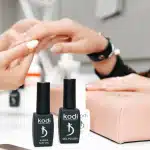The Moon’s rusting phenomenon has been a puzzle that researchers have been trying to get to the bottom of for quite some time now. The lunar surface lacks the necessary components for rust, which are oxygen and water, a fact that further threw a spanner in the works for researchers.
However, the many nights spent burning the midnight oil trying to answer this question appear to be bearing fruit, with preliminary findings coming to several conclusions, one being that our planet, Earth, may be at fault.
This article looks at two explanations put forward by researchers as they try to explain why is the moon rusting?
Reasons of Moon’s Rusting
There are probable reasons that have been put forward to try to explain the phenomenon, because how can the moon rust without oxygen? Below, we look at two of the theories put forward.
Earth’s Magnetic Field
The part of the lunar surface that has the most rust is the one facing Earth. This can be explained by the Earth’s magnetic field. As the Earth revolves around the sun, its magnetic field creates a magnetic tail, which is a stream of particles blown towards our satellite.
This stream of particles includes oxygen molecules, which, after landing on the lunar surface, could cause rusting.
Using this theory, more of this happens during a full moon, when the Earth is between the sun and it. This is because the Earth blocks solar wind from the sun from reaching the moon. The solar wind contains hydrogen, which is a reducing agent that inhibits this phenomenon.
Water and Dust
Fast-moving dust particles are common in space. Some of this dust may contain water molecules, and their impact on the lunar surface may lead to the oxidation of iron, which is already present on the lunar surface rocks. This will then lead to the formation of iron oxide, which is rust. This theory can also explain why rust can be found on other celestial bodies like asteroids.
What This Spells for Earth
The rusting doesn’t spell any direct threat to Earth. The moon is some 238,855 miles (384,400 km) from the Earth, a distance that effectively reduces any potential threats. Apart from a change in its glow, scientists don’t see any danger that the rusting of the lunar surface may cause to Earth and its inhabitants.
Mars, although relatively further from Earth than the moon, also has a hematite surface that, apart from the reddish glow, doesn’t present any dangers to Earth.
NASA’s Position: What Does NASA Say About the Moon Rusting?
Data from the Chandrayaan-1 Moon Mineral Mapper, or M3, which was built by NASA’s Jet Propulsion Laboratory, discovered water ice and mapped out several minerals on the lunar surface. It’s from the study of data from the M3 that researchers discovered hematite on its surface.
NASA scientists also support the Earth’s magnetic tail and the water and dust theories fronted as explanations of the phenomenon. More research is nevertheless underway by NASA scientists as they try to get more understanding of this phenomenon. Follow all these moon-rusting NASA developments and any other new moon-rusting findings on the space news platform Orbital Today to stay ahead of everyone else.
Rate: How Fast is the Moon Rusting?

Before delving into this question, perhaps we should also answer the question, when did the moon start rusting? The answer to this is billions of years ago. The amount of oxygen and water reaching the lunar surface to lead to rusting is scarce and far between, and depends on several factors like the Earth’s magnetic field and solar winds.
It has taken billions of years for this phenomenon to reach the current levels, yet our natural satellite is known to have been closer to the Earth in its early years after its formation. With it currently moving away from the Earth, the moon rusting 2025 and going forward will take even longer. This means the process will also take billions of years, and the occurrence will definitely not be in our lifetime.
After the discovery of hematite on the lunar surface from the M3 data in 2008, scientists have come up with several theories trying to explain this. Two theories, the Earth’s magnetic tail theory and the water and dust theory discussed in this article, offer the most convincing scientific explanations for this phenomenon.
More research is still ongoing in this field, with NASA’s ARTEMIS Lunar program expected to provide more insights into the moon’s rusting. The bottom line is our moon is rusting, but is it a good thing or a bad thing?
Author name: Emma Thorpe.

Markmalte is an experienced writer for The Celebrity Niche, specializing in celebrity stories. With a keen eye for detail, he brings the latest updates on celebrity relationships, biographies, and news to his readers.







